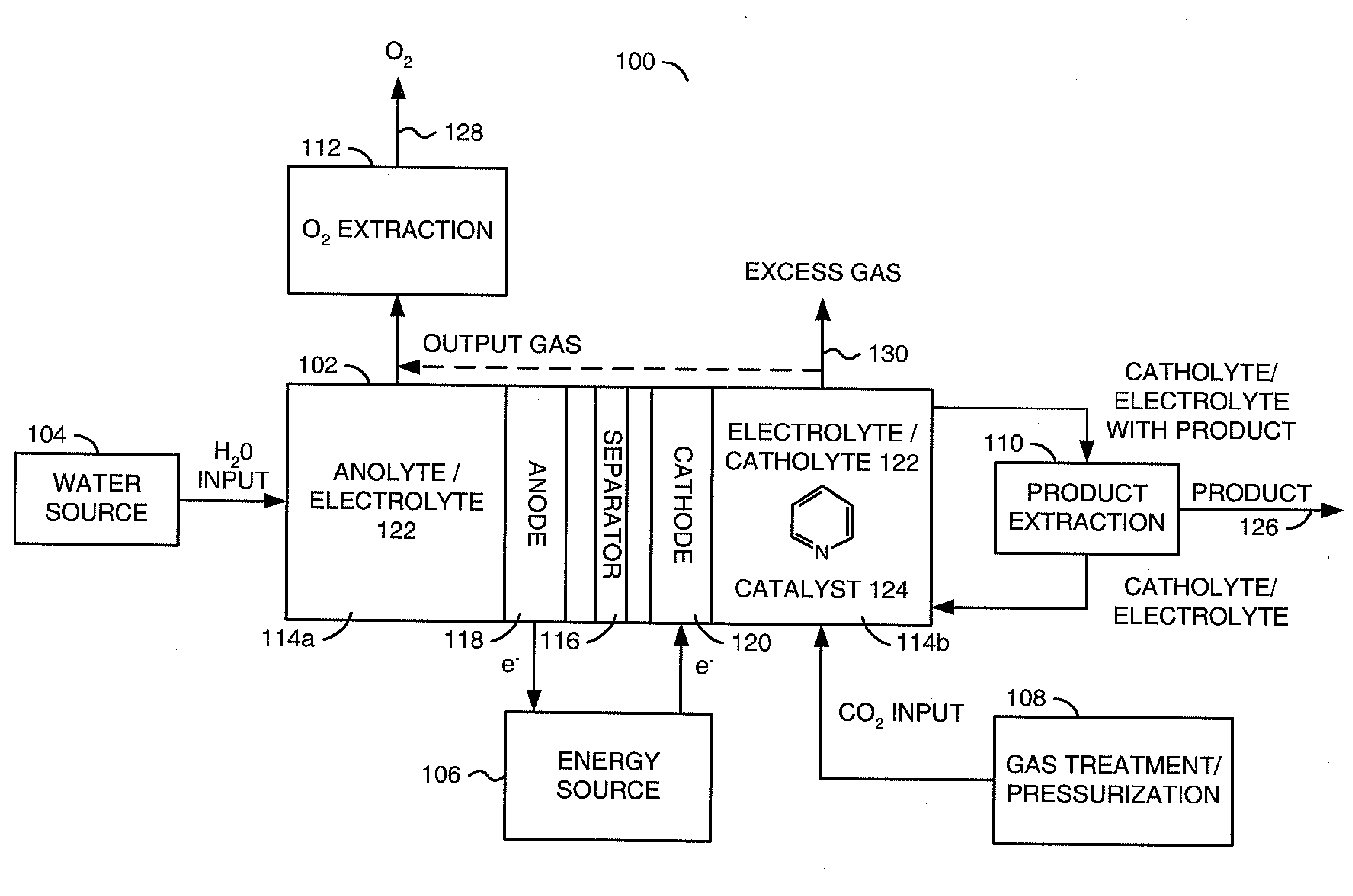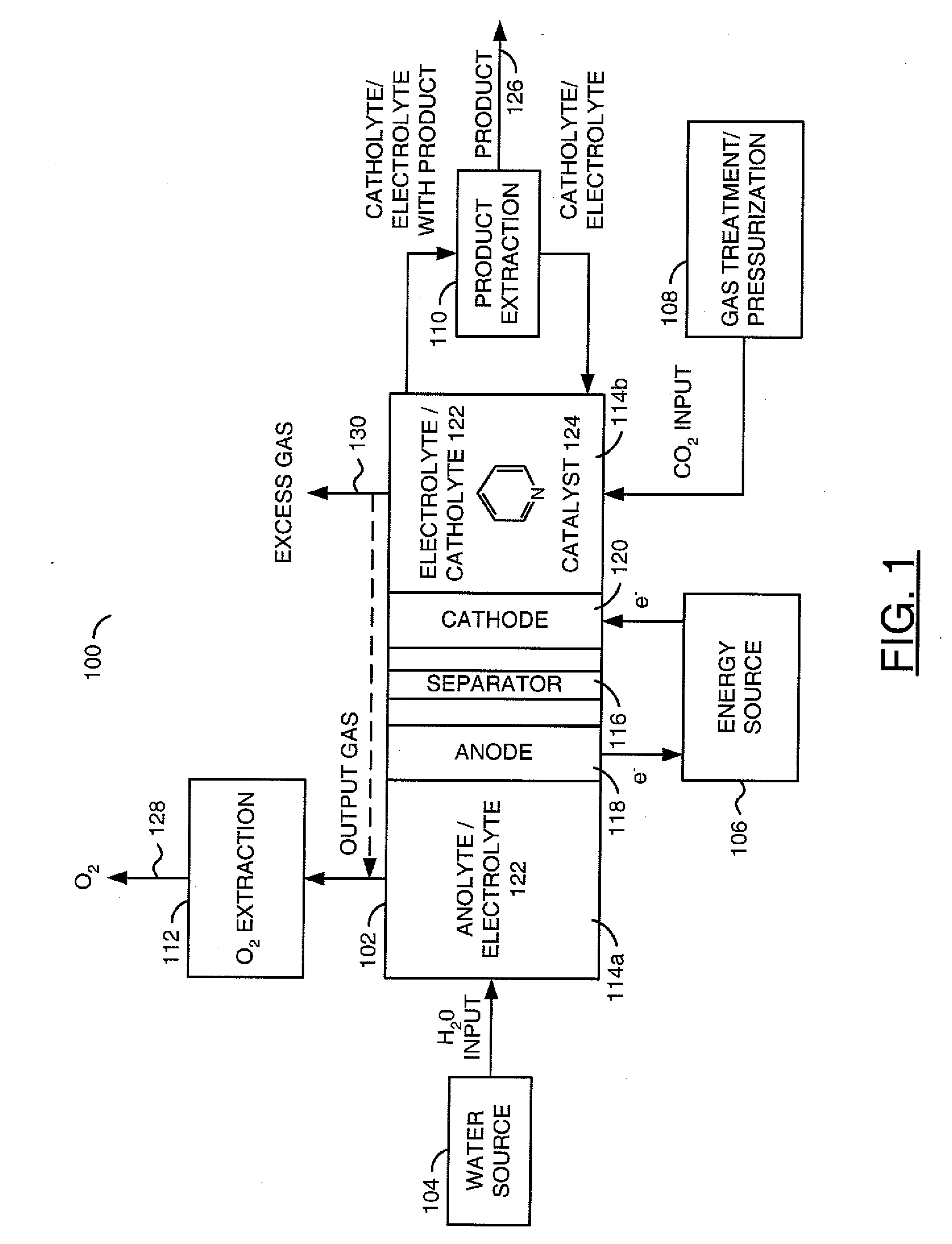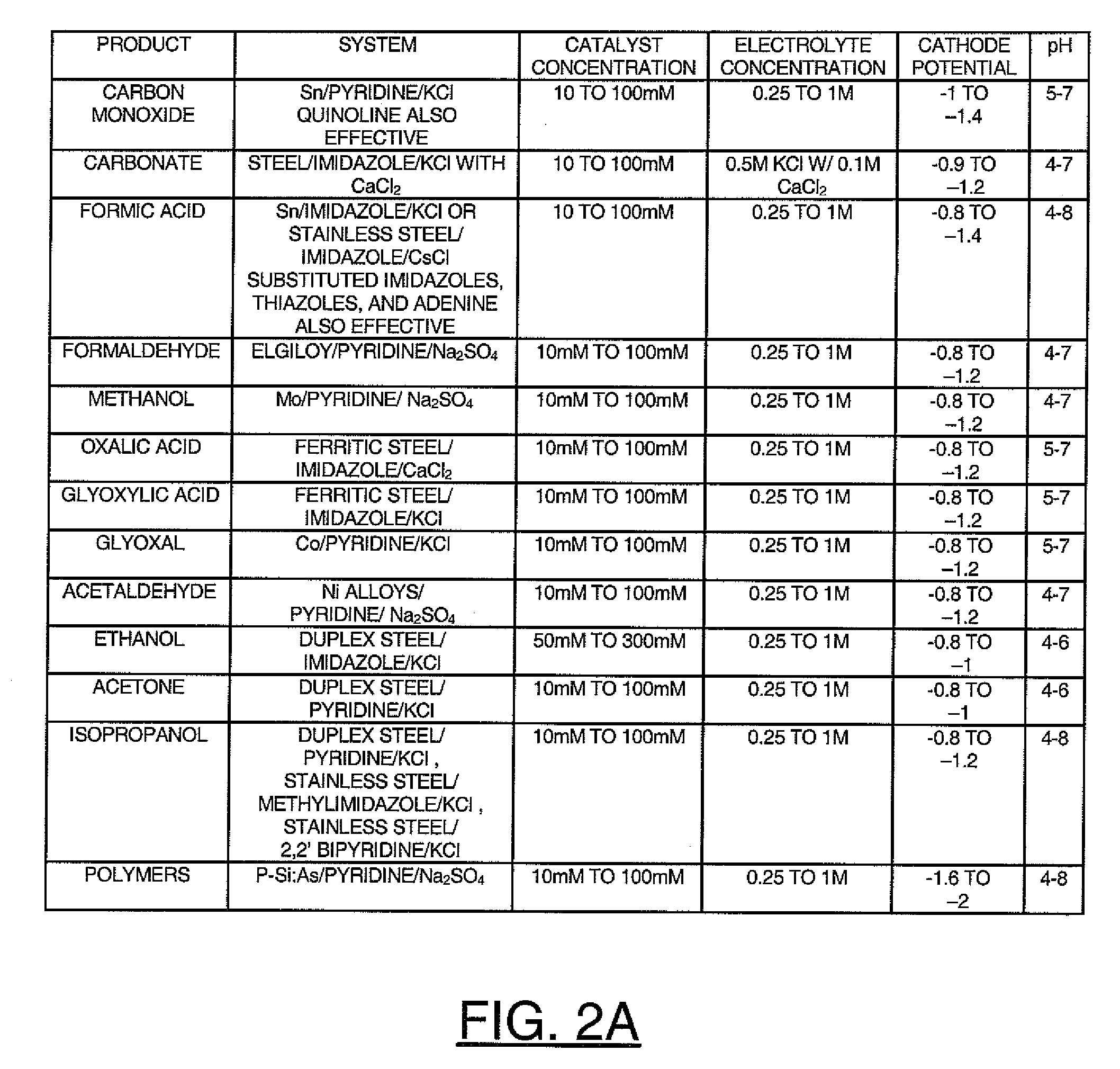Reducing carbon dioxide to products
a carbon dioxide and product technology, applied in the field of chemical reduction generally, can solve the problems of changing the ph of the ocean and other potentially damaging effects, the stability of the system used in the process, and the previous work in the field has many limitations, so as to stabilize the long-term reduction of carbon dioxide, reduce the cost, and improve the effect of stability
- Summary
- Abstract
- Description
- Claims
- Application Information
AI Technical Summary
Benefits of technology
Problems solved by technology
Method used
Image
Examples
example 1
General Electrochemical Methods
[0061]Chemicals and materials. All chemicals used were >98% purity and used as received from the vendor (e.g., Aldrich), without further purification. Either deionized or high purity water (Nanopure, Barnstead) was used to prepare the aqueous electrolyte solutions.
[0062]Electrochemical system. The electrochemical system was composed of a standard two-compartment electrolysis cell 102 to separate the anode 118 and cathode 120 reactions. The compartments were separated by a porous glass frit or other ion conducting bridge 116. The electrolytes 122 were used at concentrations of 0.1 M to 1 M, with 0.5 M being a typical concentration. A concentration of between about 1 mM to 1 M of the catalysts 124 were used. The particular electrolyte 122 and particular catalyst 124 of each given test were generally selected based upon what product or products were being created.
[0063]Referring to FIG. 7, a flow diagram of an example method 140 used in the electrochemica...
example 2
General Photoelectrochemical Methods
[0066]Chemicals and materials. All chemicals used were analytical grade or higher. Either deionized or high purity water (Nanopure, Barnstead) was used to prepare the aqueous electrolyte solutions.
[0067]Photoelectrochemical system. The photoelectrochemical system was composed of a Pyrex three-necked flask containing 0.5 M KCl as supporting electrolyte and a 1 mM to 1 M catalyst (e.g., 10 mM pyridine or pyridine derivative). The photocathode was a single crystal p-type semiconductor etched for approximately 1 to 2 minutes in a bath of concentrated HNO3:HCl, 2:1 v / v prior to use. An ohmic contact was made to the back of the freshly etched crystal using an indium / zinc (2 wt. % Zn) solder. The contact was connected to an external lead with conducting silver epoxy (Epoxy Technology H31) covered in glass tubing and insulated using an epoxy cement (Loctite 0151 Hysol) to expose only the front face of the semiconductor to solution. All potentials were ref...
example 3
Analysis of Products of Electrolysis
[0073]Electrochemical experiments were generally performed using a CH Instruments potentiostat or a DC power supply with current logger to run bulk electrolysis experiments. The CH Instruments potentiostat was generally used for cyclic voltammetry.
[0074]Electrolysis was run under potentiostatic conditions from approximately 6 hours to 30 hours until a relatively similar amount of charge was passed for each run.
[0075]Gas Chromatography. The electrolysis samples were analyzed using a gas chromatograph (HP 5890 GC) equipped with a FID detector. Removal of the supporting electrolyte salt was first achieved with an Amberlite IRN-150 ion exchange resin (cleaned prior to use to ensure no organic artifacts by stirring in a 0.1% v / v aqueous solution of Triton X-100, reduced (Aldrich), filtered and rinsed with a copious amount of water, and vacuum dried below the maximum temperature of the resin (approximately 60° C.) before the sample was directly injected...
PUM
| Property | Measurement | Unit |
|---|---|---|
| faradaic yield | aaaaa | aaaaa |
| electrical potential | aaaaa | aaaaa |
| temperatures | aaaaa | aaaaa |
Abstract
Description
Claims
Application Information
 Login to View More
Login to View More - R&D
- Intellectual Property
- Life Sciences
- Materials
- Tech Scout
- Unparalleled Data Quality
- Higher Quality Content
- 60% Fewer Hallucinations
Browse by: Latest US Patents, China's latest patents, Technical Efficacy Thesaurus, Application Domain, Technology Topic, Popular Technical Reports.
© 2025 PatSnap. All rights reserved.Legal|Privacy policy|Modern Slavery Act Transparency Statement|Sitemap|About US| Contact US: help@patsnap.com



